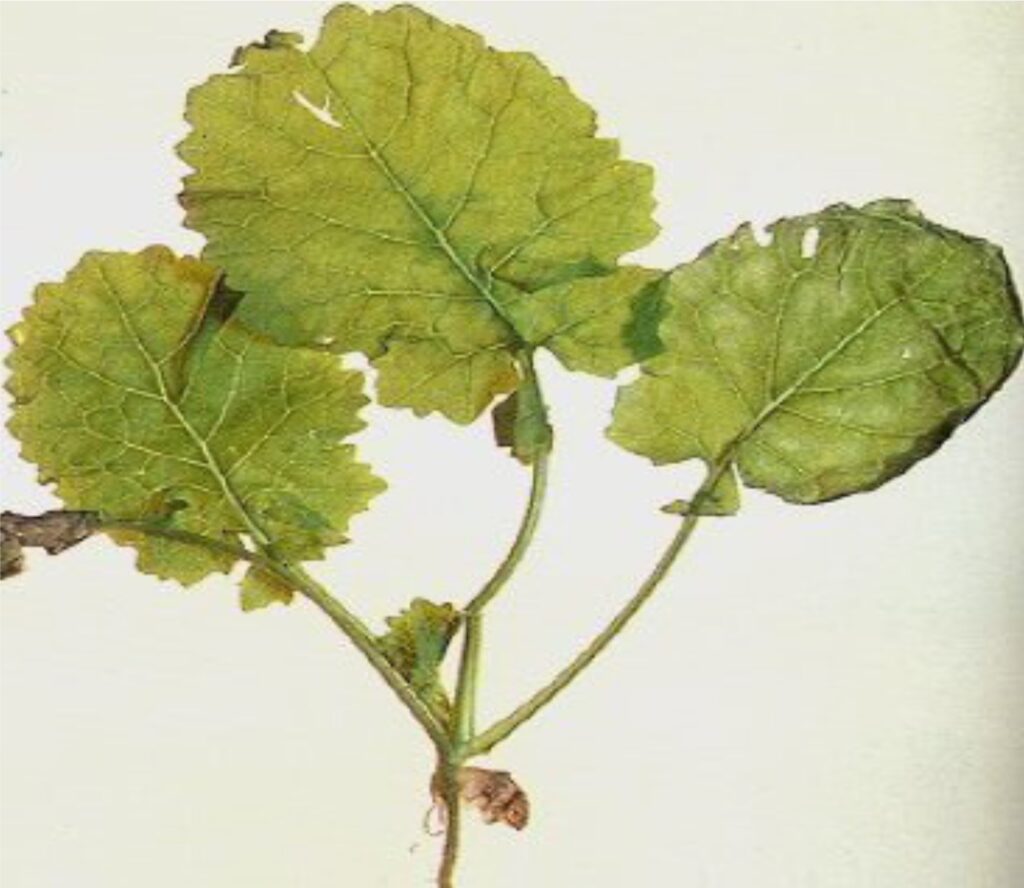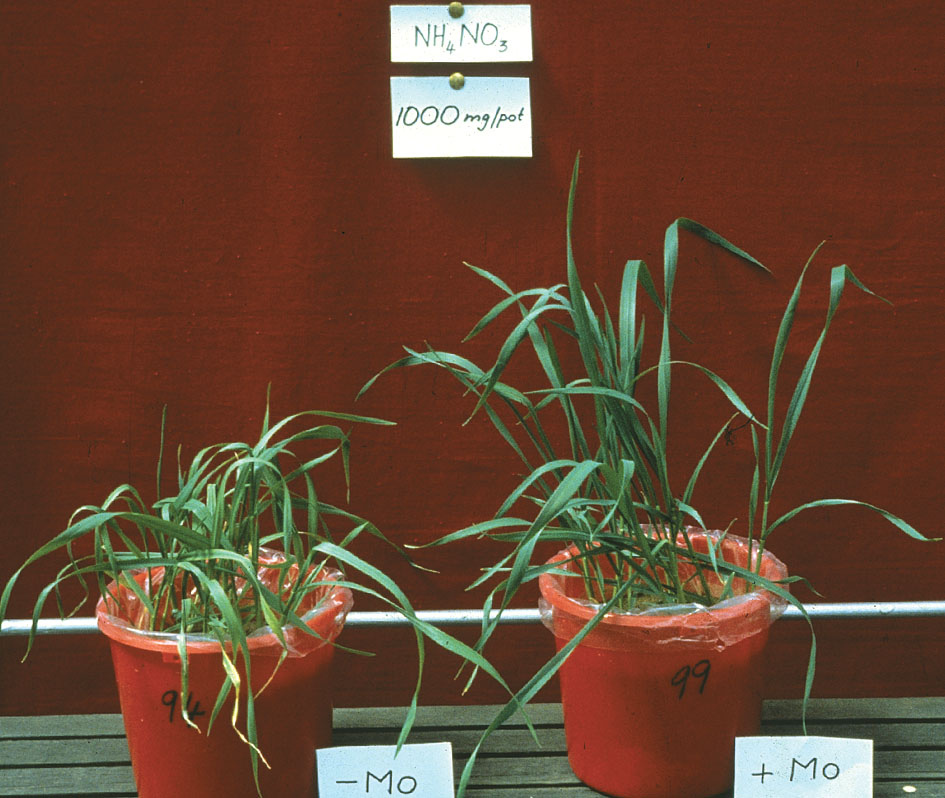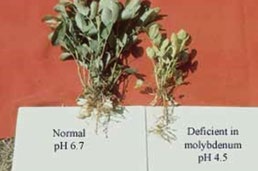
Molybdenum
Nutrient Benefits
Antagonism
High Mo levels can reduce the availability of:
- Copper
- High Sulfur reduces Mo availability
- Nitrogen
Stimulation
- Good supply of Mo improves nitrogen uptake and conversion
Functions
- Co-factor in the enzyme nitrate-reductase
- Aids in the conversion of nitrates to ammonium (initial stage of synthesis of proteins)
- Helps plants to utilize nitrate N
- Essential for rhizobia to enable legume crops to fix aerobic (atmospheric) N
- Involved in phosphate and Fe metabolism
Deficiency Symptoms
- Similar to N deficiency
- Yellow, pale leaves
- Stunted growth
- Necrotic leaf margins and tips
- Symptoms begin in older leaves first
- Flower wither or are suppressed
Factors Affecting Availability
- Soils with low P levels
- Soils derived from parent materials low in Mo
- Low pH soils (especially if they contain Al or Fe oxides)
Sensitive Crops
- Cucurbits, crucifers, pulses
TREATMENT OPTIONS
The following OMEX products can assist with addressing and correcting Molybdenum deficiency:
Visual Guide



